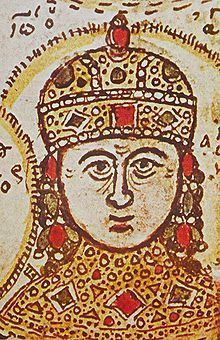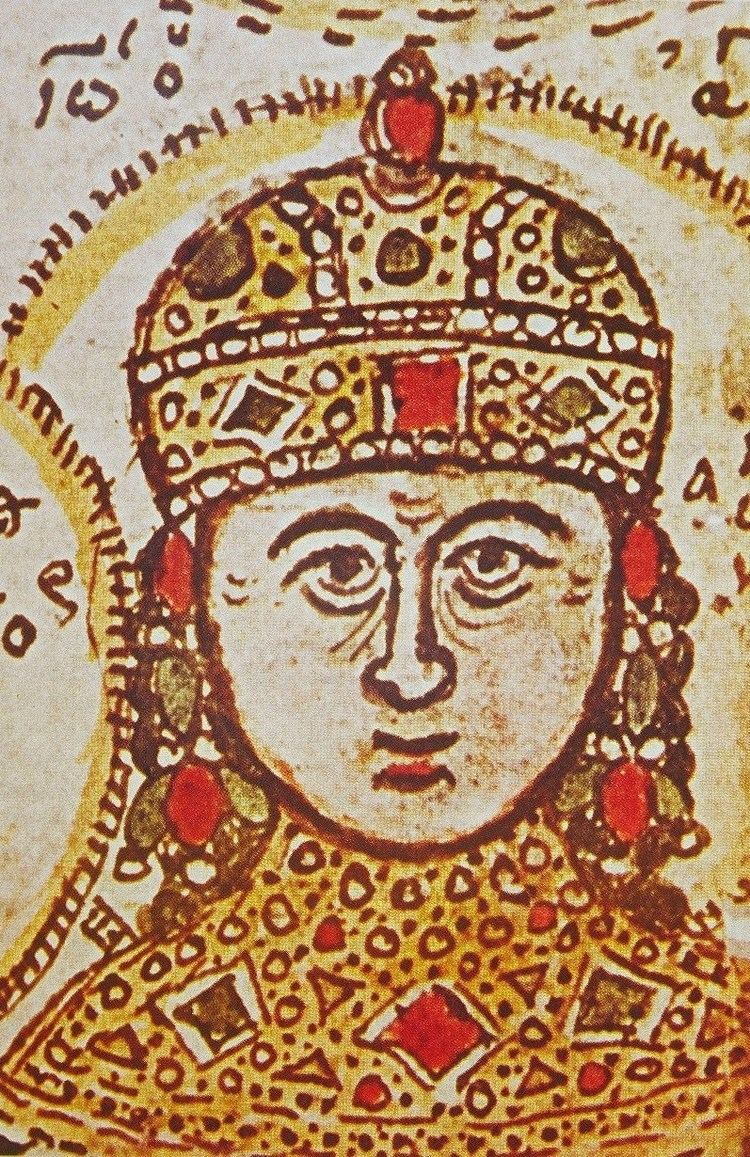Reign 1258–1261 Religion Eastern Orthodoxy Mother Elena of Bulgaria Died 1300 | Predecessor Theodore II Laskaris Name John Laskaris | |
 | ||
Parents Elena Asenina of Bulgaria, Theodore II Laskaris Grandparents John III Doukas Vatatzes, Ivan Asen II of Bulgaria, Anna Maria of Hungary, Irene Laskarina Similar People John III Doukas Vatatzes, Ivan Asen II of Bulgaria, Kaloyan of Bulgaria, Saint Sava, Omurtag of Bulgaria | ||
John IV Laskaris | Wikipedia audio article
John IV Doukas Laskaris (or Ducas Lascaris) (Greek: Ἰωάννης Δ΄ Δούκας Λάσκαρις, Iōannēs IV Doukas Laskaris) (December 25, 1250 – c. 1305) was emperor of Nicaea from August 18, 1258 to December 25, 1261. This empire was one of the Greek states formed from the remaining fragments of the Byzantine Empire, after the capture of Constantinople by Roman Catholics during the Fourth Crusade in 1204.
Contents

Biography
John was a son of Theodore II Doukas Laskaris and Elena of Bulgaria. His maternal grandparents were Emperor Ivan Asen II of Bulgaria and his second wife Anna Maria of Hungary. Anna was originally named Mária and was the eldest daughter of Andrew II of Hungary and Gertrude of Merania.
John IV was only seven years old when he inherited the throne on the death of his father. The young monarch was the last member of the Laskarid dynasty, which had done much to restore the Byzantine Empire. His regent was originally the bureaucrat George Mouzalon, but Mouzalon was murdered by the nobility, and the nobles' leader Michael Palaiologos usurped the post. Soon, on January 1, 1259, Palaiologos made himself co-emperor as Michael VIII. Michael was, in fact, John's second cousin once removed, since they were both descended from Euphrosyne Doukaina Kamatera.
After Michael's conquest of Constantinople from the Latin Empire on July 25, 1261, John IV was left behind at Nicaea, and was later blinded on Michael's orders on his eleventh birthday, December 25, 1261. This made him ineligible for the throne, and he was exiled and imprisoned in a fortress in Bithynia. This action led to the excommunication of Michael VIII Palaiologos by the Patriarch Arsenius Autoreianus, and a later revolt led by a Pseudo-John IV near Nicaea.
John IV spent the remainder of his life as monk in Dacibyza, under the name Joasaph. There is a rescript of Charles of Anjou, dated 9 May 1273, which refers to a report that John escaped from his imprisonment and invites him to come to his court. Further documents attest to his arrival and receiving a pension from the Angevin arch-enemy of Michael Palailogos. However, this contradicts the evidence of the historians George Pachymeres and Nikephoros Gregoras, who record that John remained in Dacbyza until long after Michael's death. In his study of Michael VIII's reign, historian Deno John Geanakoplos discusses the contradictory evidence and comes to the conclusion that the documents of Charles of Anjou were intended to serve as propaganda, "to attract the support of the legitimist, pro-Lascarid Greeks of the Byzantine Empire, as well as to sway the anti-Angevin sentiment of the still surviving Greek population of Charles' own territories of southern Italy and Sicily."
In 1290 John was visited by Michael VIII's son and successor Andronikos II Palaiologos, who sought forgiveness for his father's blinding three decades earlier. As Donald Nicol notes, "The occasion must have been embarrassing for both parties, but especial for Andronikos who, after all, was the beneficiary of his father's crimes against John Laskaris." The deposed emperor died about 1305 and was eventually recognized as a saint, whose memory was revered in Constantinople in the 14th century.
